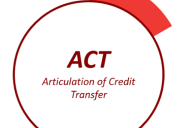You have /5 articles left.
Sign up for a free account or log in.
This column is the second in a two-part series based on “Characterizing Extra Credit Accumulation by Undergraduate Students” by Tushar Ojha and Don Hush, published in IEEE Access. The research analyzed over 13,000 graduates from the University of New Mexico to understand patterns in student credit accumulation.
While implementing efficient systems and policies provides the foundation for successful credit management, the research reveals that students accumulate extra credits throughout their entire academic journey—not just at transfer points. Understanding the timing and patterns of this accumulation provides valuable insights for academic advisers working directly with students.
Excess Credits Are an Institutional Issue—but Advisors Are Key to the Solution
Academic advisers are uniquely positioned to help students avoid earning excess credits—to the extent that it’s possible. While some accumulation may be intentional or even beneficial, much of it reflects a broader misalignment between student exploration, program requirements and institutional structures. This misalignment is something advisers see up close, every day, one student interaction at a time.
Exploration Is Good—Until Systems Penalize It
Higher education has long celebrated intellectual exploration as part of the undergraduate experience. But the systems students must navigate often work against that ideal. Crowded curricula, rigid sequencing and inflexible policies can turn exploration into inefficiency.
Some degree programs, particularly in STEM and health fields, have become so prescriptive that there’s little room to wander—even within the major. When a student in one of these fields wants to explore a different path, the cost is often significant in time and credits. A late major change under these conditions can mean dozens of applicable-yet-unneeded credits.
This isn’t just a student decision—it’s a structural issue. And it puts added pressure on students to “get it right” early, even when they (traditional students in particular) are still figuring out who they are and what they want. That’s where advising comes in.
Meta-Majors and Early Clarity Can Help
Institutions that use meta-majors—broad academic focus areas that allow students to begin coursework before committing to a specific major—offer one potential solution. These structures support exploration within an academic area, reducing the risk of “wasted” credits if a student shifts direction. Advisers play a key role here, helping students make intentional decisions within meta-majors and asking key questions about course selection with multiple potential outcomes in mind.
Some Excess Credit Is Strategic
It’s also worth noting that not all excess credit is accidental or wasteful. Sometimes students take additional credits to meet professional goals, such as sitting for the CPA exam, applying to graduate or professional schools, or broadening their skill set to be more competitive in the job market.
The challenge is distinguishing between strategic credit accumulation and unintended accumulation—something that requires thoughtful, sustained advising rather than transactional course approvals.
Advisers Need Space and Support to Do This Work
Reducing excess credit accumulation isn’t about telling students to take fewer classes. It’s about giving advisers the tools, time and training to:
- Understand degree pathways deeply and communicate them clearly.
- Help students anticipate the implications of major changes or dual credentials.
- Collaborate with faculty to identify curriculum bottlenecks and inefficiencies.
- Identify patterns early and offer targeted, personalized guidance.
The irony here is that sometimes institutions optimize academic advising for efficiency, both in the student journey and in the delivery of academic advising. With ever-expanding caseloads and 15- to 20-minute advising appointments, there is often little time for the deeper, sustained conversations required to help students thoroughly consider the knock-on effects of each decision they make around academic program and course selection.
When we acknowledge that most excess credit accumulation isn’t caused by loss of credits due to transfer, poor advising or any other single cause—but rather by a complex mix of institutional structures, program design and student uncertainty—we can begin to shift the conversation. Advisers cannot solve this problem alone. Indeed, academic advisers operate at the intersection of these factors and absolutely must be part of the solution.
The Bottom Line
This research confirms that excess credits are a systemic issue—not just a transfer problem. But it also implies that the adviser-student relationship is one of the most powerful levers institutions have to influence student credit behavior. When students have access to advisers who understand both the curriculum and the individual, they’re more likely to make informed, efficient choices. These aren’t decisions that can be rushed. Students need time with advisers to thoughtfully weigh their options and map out the consequences of each potential move.
Supporting students in exploring their interests without derailing progress toward their goals is one of the most challenging—and important—roles academic advisers play. It’s time to treat that role not as a service on the sidelines, but as a central strategy for institutional effectiveness and deeper learning and leaner success.


